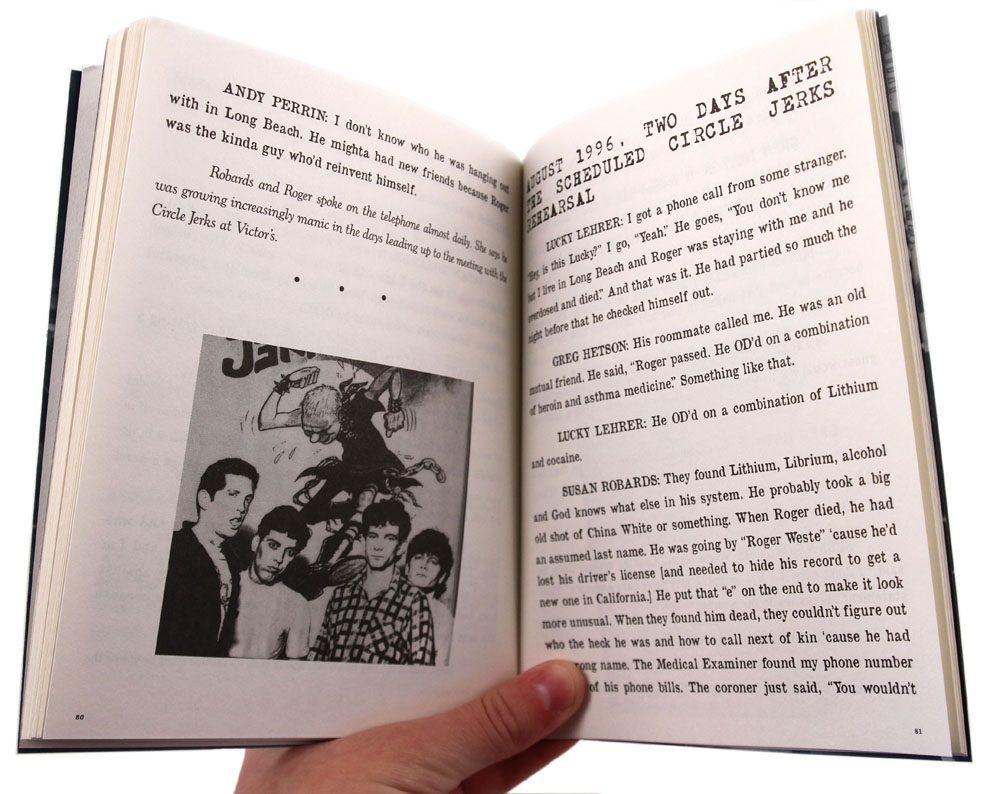Scene History Zine Reviews by Reviewed by Chris Auman
Out of the Basement

Out of the Basement: From Cheap Trick to DIY Punk in Rockford, Illinois, 1973-2005
By David A. Ensminger
Every borough and backwater across the US has its own story about how punk rock came to town and conquered the hearts and minds of the idle youth. Those who were bitten by the DIY bug started bands, made zines, hosted radio shows, DJed and turned dives into venues where new bands could play. The names of many, if not most, of these local pioneers will be lost to history, but not if Microcosm Publishing has anything to do with it. Their Scene History series records these often overlooked movements in zine form. Out of the Basement is Rockford’s story.
Located in north central Illinois, Rockford is a city of just under 150,000 people. It enjoyed the distinction of being second only to Chicago as the state’s largest metropolitan area. That was until Aurora took over the spot relegating Rockford to number three. Once a blue-collar manufacturing center, the city fell victim to the same fate as other rust belt towns. It up and went bust. Mostly. Rockford is a city I’ve passed by, sometimes through, mostly by bus, for most of my life. I’ve met a handful of the city’s ex-pats here in Chicago. A few of them are mentioned in this book.
The zine’s author, David Ensminger, is a Rockford native himself. He was intimately involved in the punk and DIY scene there in the late 80s and early 90s. He details the city’s underground rock movement from the 70s through the mid-aughts. It was a scene that closely paralleled what was going on in other cities across the country. The book starts with Rockford’s, and perhaps the whole state’s most well-known export, Cheap Trick. Lesser-known bands such as Aerosol Vomit, Bludgeoned Nun and War on the Saints played small clubs and parties attended by a dedicated cadre of skaters, zinesters and like-minded punks who welcomed national touring bands.
Through interviews with musicians, writers/artists and recording engineers, Ensminger documents the history of the scene and paints a picture of a typical American city full of bored and restless youth with more energy and creativity than they knew what to do with. What they did do was create their own art and music and their own scene even though it may have failed to garner much attention beyond Winnebago County lines. Rockford is in good company with countless other cities in that regard.
Out of the Basement is an interesting read even if you aren’t from Rockford or Illinois or the Midwest. Here’s hoping Microcosm gets to your town and your scene soon. [visualvitriol.wordpress.com]
Thanks for reading these Scene History Zine Reviews
The Prodigal Rogerson

The Prodigal Rogerson: The Tragic, Hilarious, and Possibly Apocryphal Story of Circle Jerks Bassist Roger Rogerson in the Golden Age of LA Punk, 1979-1996
By J. Hunter Bennett
The Circle Jerks were one of the more popular SoCal hardcore bands in the 1980s. They played loud and fast and sent mosh pits into overdrive, but the band is also at least partly responsible for steering hardcore in the direction of tuneless, mindless, metal-tinged palp. That aside, they were an influential band and huge by 80s underground standards. This book from Microcosm is an interesting side note—not just to the Circle Jerks story, but to the greater L.A. punk rock history as well.
Roger Rogerson was an early member of the group and played on the band’s first three albums. Like many kids attracted to punk and hardcore, he arrived with plenty of baggage. No one in the band got too close to him and he seemed to have a careerist air about him which raised some suspicion within the scene about his motives. Rogerson had several aliases and many of the contributors to this story aren’t certain what his real name was. Rogerson had an equally mysterious background and was, depending on who you ask, a military spy and a classically trained musician. He may have been both or neither.

At some point during his tenure with the band Rogerson up and left town unannounced. No one connected to the band saw him for many years. During his self-imposed exile from punk rock, he got married, moved to Las Vegas, then Missouri, sold cars and tried to start several bands in an effort to jumpstart a rock star career. While he never found success in any of these endeavors he did manage to stay sober for a stretch or two, but never for too long. Rogerson returned to L.A. at the height of punk rock’s commercial heyday in the 1990s, seeking to capitalize on the Circle Jerk’s name and reputation, figuring he could become a rock star that way. However, he was met with a general lack interest form his former bandmates. Soon after he was dead from an overdose that was either accidental or on purpose, depending on who you ask.
I found Roger to be not too terribly sympathetic as a subject, due no doubt to his unwillingness or inability to let people into his life. That did not stop me from enjoying this account of his time with the Circle Jerks, in fact, I read it in one sitting. So now the story is told. The punk rock scene is full of footnotes and that’s the point of Microcosm’s Scene History series which seeks to document the lesser-known scenes and players.
Thanks for reading these Scene History Zine Reviews.
Read more zine reviews.
